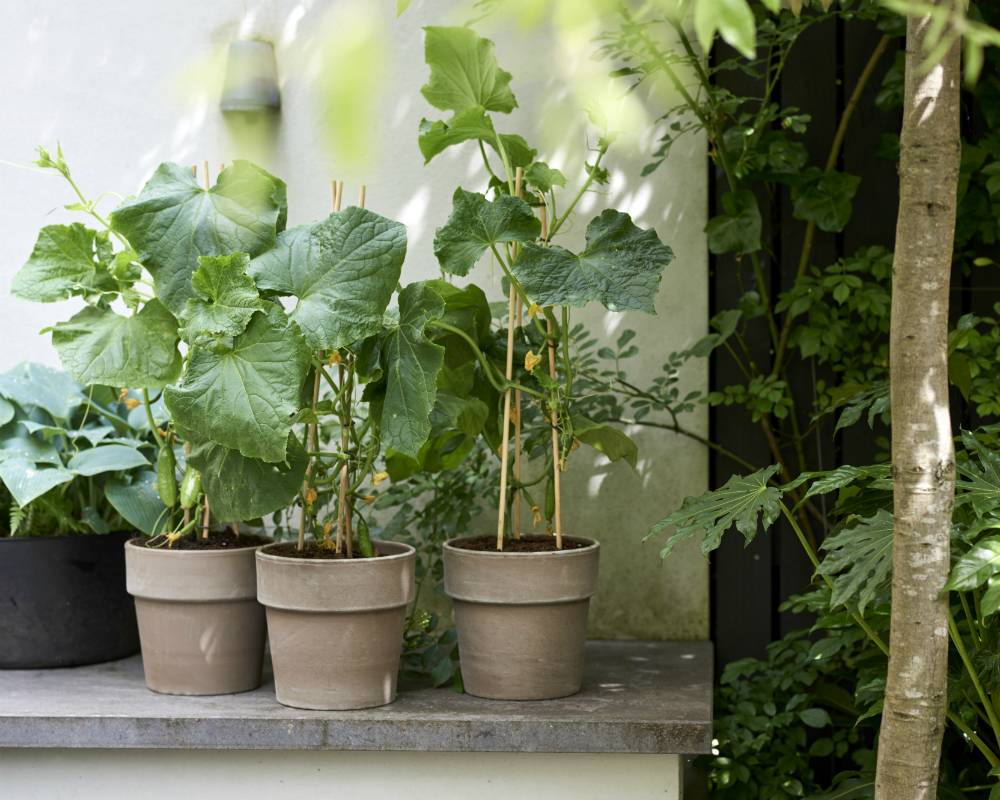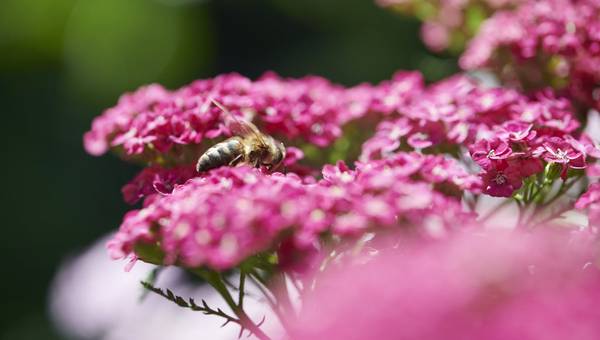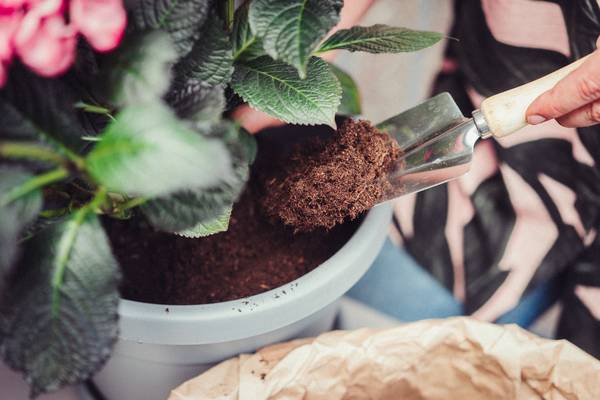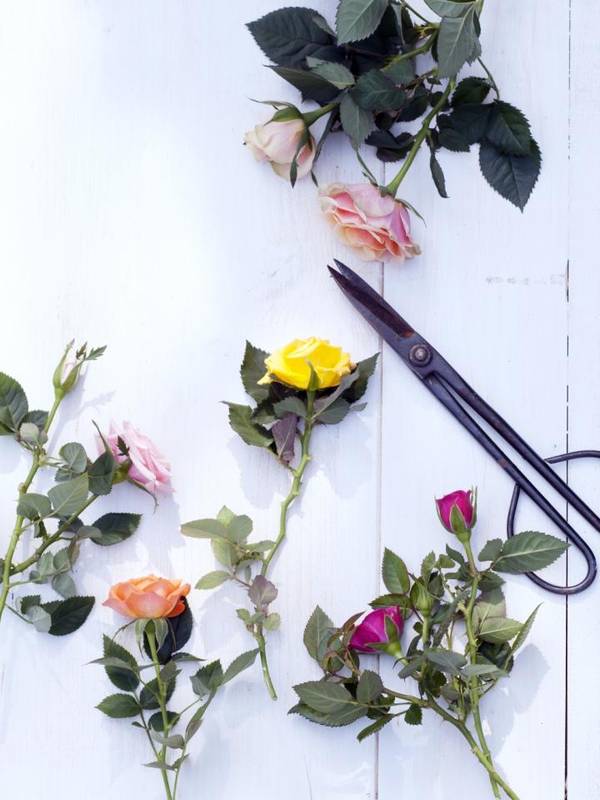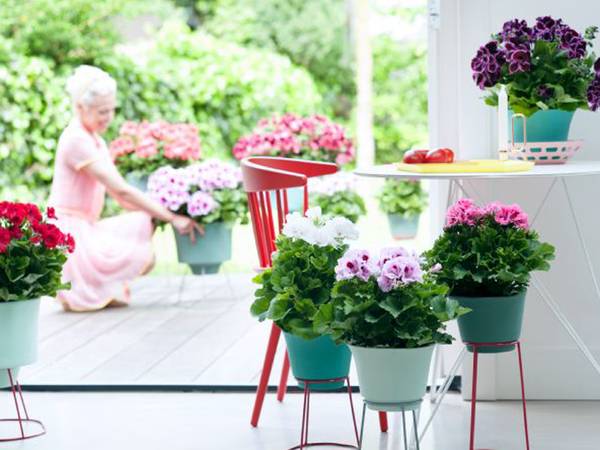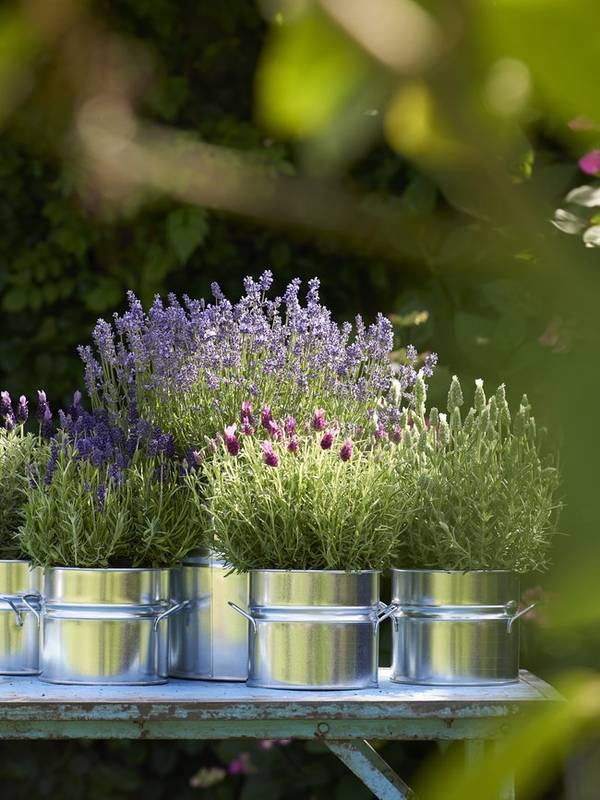
Care tips
- The cucumber plant’s roots need a lot of room to grow - they’re always looking for water.
- The plant needs watering every day, particularly in summer. If the leaves are drooping, the plant is really thirsty.
- Also give it some extra plant food with special vegetable fertiliser to keep the plant healthy.
- Place your cucumber plant in a sunny, sheltered spot, and ensure that it’s exposed to as little wind as possible. The large leaves mean that wind can damage the plant, cause it to evaporate more water and make it to droop more rapidly.
- Cucumber plants want to grow upwards with their twisting runners. You should therefore support them with canes, frames or mesh.
- Prune off the side shoots regularly and remove ugly leaves or leaves that are hanging in front of the fruit. This will allow enough light and air to reach the cucumbers.
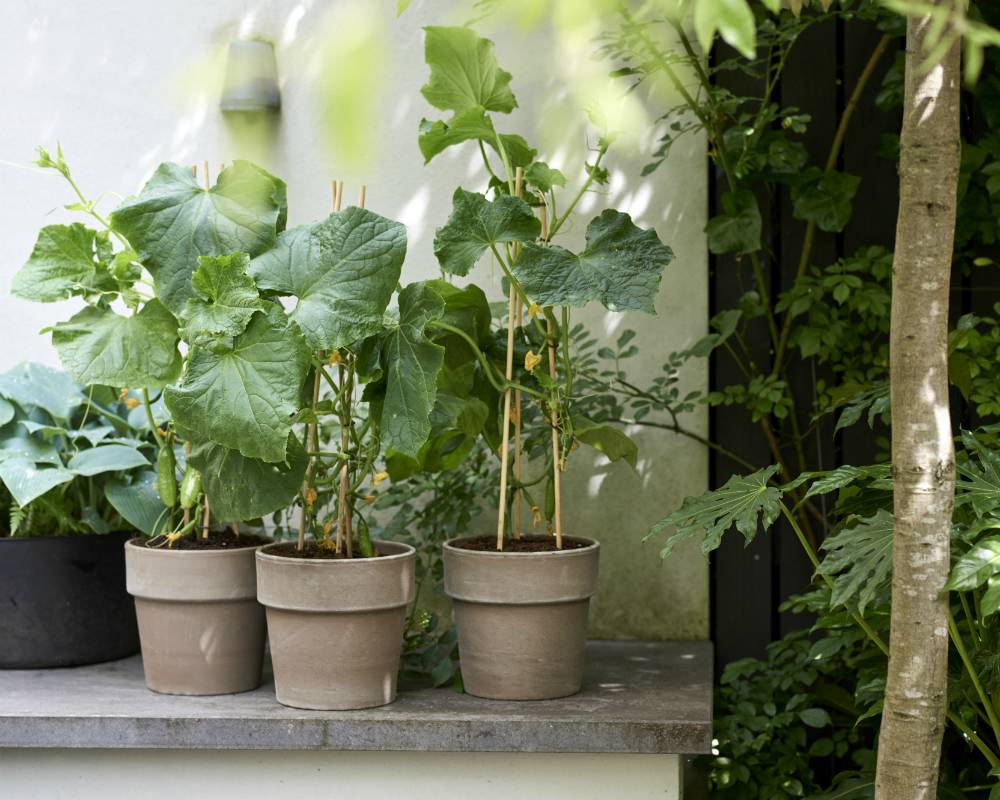
You can plant them yourself in containers, pots or beds, so they’re also suitable for balconies or your (roof) terrace. Some plants are even sold with a few cucumbers already in place. These pre-cultivated plants surprise you over the summer with small yellow flowers and then with delicious healthy cucumbers. Cucumber plants come as climbers and also in a dwarf variety which is ideal for pots and containers.
Origin
Cucumber plants bear the Latin name Cucumus sativus, which means ‘cultivated’. The plants originate from India, where they have been grown for 3000 years. The Romans brought them to Western Europe via the countries around the Mediterranean.

Trivia
- Vegetable or fruit? It’s always a source of confusion. From a culinary and horticultural perspective, cucumbers are a vegetable.
- The gherkin is closely related to the cucumber - it’s basically its little brother. You grow them in the same way.
- Cucumbers consist of 90% water, fibre and nutrients and contain few calories, making them the ideal snack.
- The cucumber season falls during the quiet days of summer, giving you more time to spend in your vegetable patch.
